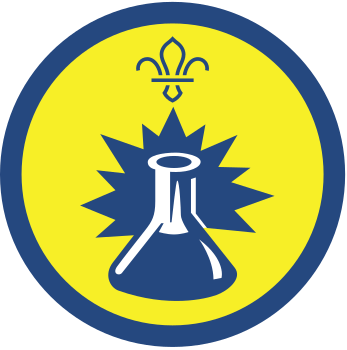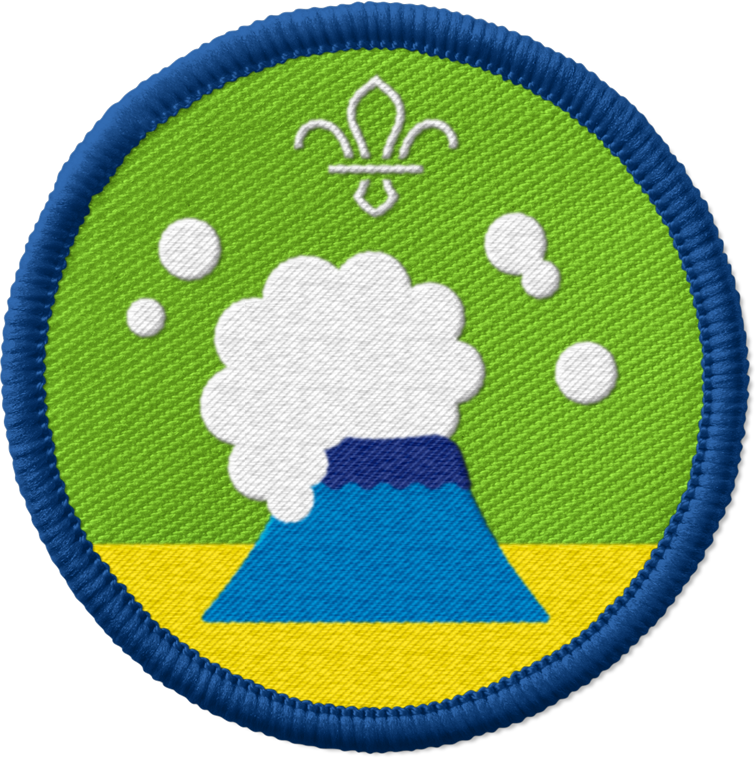
Make a rainbow disc spinner
You’ll need
- Coloured pens or pencils
- String
- Pens or pencils
- Scissors
- Rulers
- Sticky tack
- Wooden skewers
- White card
- Spinner template
Before you begin
- Use the safety checklist to help you plan and risk assess your activity. Additional help to carry out your risk assessment, including examples can be found here. Don’t forget to make sure all young people and adults involved in the activity know how to take part safely.
- Make sure you’ll have enough adult helpers. You may need some parents and carers to help if you’re short on helpers.
Planning this activity
- Decide how you’ll run the activity – the whole group could make their spinners together, or you could set up two or three experiments at the same time.
- If you have a few experiments on the go at once, put everything needed for each on a different table, and make sure there’s an adult at each table. Decide how you’ll signal that everyone should move to the next table and start the next experiment.
- Make spinners out of white card. You could use the spinner template, or draw around something round (such as a plastic beaker) then draw lines using a ruler to divide the circle into six sections. Both sides should be divided into six equal sections. Cut the circles out.
Make the spinners
- Give everyone a spinner. It should be a cut-out circle of white card, and each side should be divided into six equal sections (a bit like a pizza!).
- Everyone should colour both sides of their spinner. They should make sure each section is a different colour. People can choose which colours they’d like, but bright colours work best.
- Encourage people to be creative, and think about putting light colours next to dark colours.
- Everyone should work with an adult to make two holes near the centre of the wheel. They could put a small piece of sticky tack underneath the wheel, then use a skewer (or sharp pencil) to pierce the holes. The templates have dots to show you where to make the holes.
- Now measure around 60cm of thing string. That’s roughly the length of an adult’s arm, from the tip of their middle finger to their shoulder.
- Next, thread one end of the string through both of the holes, so one side of the spinner has a loop of string and the other side has two loose ends. They should tie the two loose ends together, so the spinner is in the middle of a big loop of string.
Try the spinner
- Everyone should wind the wheel on the spinner several times. The more they wind the wheel, the better it will spin.
- Hold the ends of their string, then pull their arms apart to make the wheel spin around. They should look closely at the wheel – what colour do they see? When it’s moving really fast, the circle will look white.
- Everyone should think about why they only see the colour white. They may want to talk to a partner to share their ideas. Does the ink fall off the paper? Do the colours actually disappear? Is our mind just telling us it’s white?
- Now repeat steps one and two to spin the spinner again and try to figure out what’s happening.
- Everyone should gather together. The person leading the activity should help everyone talk about what they saw, and why they think it happened. The ink didn’t fall off the paper; it was still there at the end. No one suddenly became colour blind; they could see other colours in the room.
- Explain that the spinners looked white because our eyes can’t keep up with how fast the colours were spinning, so it combined them and blended them into one, and the spinner looked white.
- A scientist called Newton used a coloured circle like this to show that sunlight is made up of all of the colours of the rainbow added together to make white light.
Reflection
In this activity, everyone developed skills. What skills did everyone use to make the spinner? People also had a chance to develop their investigation and scientific skills. Can anyone remember why the spinners looked white? Our eyes can’t keep up with how fast the colours were spinning, so it combined them into one.
This activity also needed people to problem-solve. Did anyone have any problems making their spinners? What did people do when things were difficult? Sometimes we ask for help from a friend or grown up, and sometimes we can try to work the problem out ourselves. How did people decide what they thought happened to the colours on the spinner?
Safety
All activities must be safely managed. You must complete a thorough risk assessment and take appropriate steps to reduce risk. Use the safety checklist to help you plan and risk assess your activity. Always get approval for the activity, and have suitable supervision and an InTouch process.
- Scissors
Supervise young people appropriately when they’re using scissors. Store all sharp objects securely, out of the reach of young people.
- Sharp objects
Teach young people how to use sharp objects safely. Supervise them appropriately throughout. Store all sharp objects securely, out of the reach of young people.
Experiment with different lengths of string to see if longer or shorted string makes the spinners spin faster.
You could find out more about colours and how we can see them.
You could learn the rhyme ‘Richard of York gave battle in vain’ to remember the colours of the rainbow (red, orange, yellow, green, blue, indigo, violet).
You could also make a rainbow outside on a sunny day with the mist setting on a hose. However, never look directly at the sun, as it can damage your eyes.
Offer help with drawing, cutting, and threading string if anyone needs it.
All Scout activities should be inclusive and accessible.

